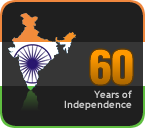 When we were children I don’t remember having any toys to play with. All we had were a few marappachis,(see picture) wooden dolls, and some wooden chattippanai (pots and pans). We, that is, my sisters and friends were happy with these toys. The chattippanai would be divided into equal parts amongst everyone. We would select a niche in the garden to set up house, cook and keep house. The boys used to join us as men folk who go to office, and the younger ones would act as babies. Gradually this kind of playacting came to an end when girls also started going to school.
When we were children I don’t remember having any toys to play with. All we had were a few marappachis,(see picture) wooden dolls, and some wooden chattippanai (pots and pans). We, that is, my sisters and friends were happy with these toys. The chattippanai would be divided into equal parts amongst everyone. We would select a niche in the garden to set up house, cook and keep house. The boys used to join us as men folk who go to office, and the younger ones would act as babies. Gradually this kind of playacting came to an end when girls also started going to school.There were also the other sorts of games, like playing Kattam which was like the Ludo of today. The squares were drawn on the floor with a charcoal piece, or a chalk if available, and for coins, small shells were used. Another game we used to play with our mother and grandmother was the pallankuzhi, a wooden block of 10” and 6” with six shallow pits on the long side and one on the short side with two bigger shallow pits in the centre.
This game was played with shells or manjadi distributing 6 to each pit, and changing them from pit to pit.
 The game had its own rules of picking up the manjadi and dropping it one by one on the pits. The manjadi is a seed red in colour, and shaped like a miniature flying saucer, a very minute one. Today one can find the manjadi, along with kunthumani,(see picture) another seed, red and black, only in a goldsmith’s shop, where it is used to weigh the gold for the last possible minimum weight.
The game had its own rules of picking up the manjadi and dropping it one by one on the pits. The manjadi is a seed red in colour, and shaped like a miniature flying saucer, a very minute one. Today one can find the manjadi, along with kunthumani,(see picture) another seed, red and black, only in a goldsmith’s shop, where it is used to weigh the gold for the last possible minimum weight.Some years back, Raja took me to Penang for a holiday. We stayed in a hotel by the seaside. It was a beautiful holiday centre and we had a lovely time. While we were having lunch one day, one of the waiters seeing that we are from India, and spoke Tamil, asked me to explain something for him. He took me to the showcase in the lounge, pointed out the pallankuzhi exhibited there and requested me to explain what it was. When he heard my explanation, he was wonderstruck to learn that it was a plaything like a board game.
The boys had their own games like playing marbles. I doubt if today’s children, know what marbles are like. They don’t know the pleasure of confiscating the opponent’s marbles, or the pain when the opponent hits the knuckles with the marble that comes flying from his taut fingers held like an arrow. Another game the boys used to enjoy was the gulli danda - hitting a small wooden object with a bigger wooden stick and finding out who could hit the gulli the farthest.
Gradually all these toys were back benched when board games started appearing in the children’s world. Then came the tricycle, small motor cars and the rocking horse. The rocking horse had a very short life compared to the others. Every child enjoyed rocking on the horse. It was a great toy in the 50s and continued to be popular till the 70s.After that I haven’t seen any.
My own children and the older grandchildren had owned and loved rocking on this wonderful toy. The rocking horse kept the child out of mischief when the mother was busy, and it was so light that it could be carried from room to room or wherever the children wanted. My daughter tells me that her son in London had been looking for a rocking horse in London. They could find it only in one shop, where it was priced at 100 pounds, whereas the one we got for Raja while in Pondicherry cost only Rs. 12 in 1958. It was only Rs. 7 in the late 40s when Raji and Bala were gifted one from an uncle. 

Bala and Raji
I have been to the USA frequently from 1975 onwards, but I have never seen a rocking horse with any child, or in any shop and I used to wonder why! Now I wonder if the reason could be this. There was a Hollywood film released in the fifties , based on a short story by D. H. Lawrence, called ‘The Rocking Horse Winner’. I do not remember the story in detail, but the gist of the story was that the boy while rocking on his horse had the gift of forecasting the winning horse in each race at a certain racecourse. The news spread all over the place like forest fire, and the people who were fond of betting and looking forward to making money thronged to his place to listen to his forecast. And they were also willing to pay a lot of money to his parents for this favour. Though I don’t remember how the picture ended, it was said that the young boy who acted in the picture got addicted to rocking on his horse without sleep or food. This went on till he dropped dead one day.
Another toy I remember in those days was the Hula Hoop It was a circular plastic ring with a diameter of 36”. All one had to do was slip the hoop over one’s head, and bring it to one’s hip and keep it there by gyrating one’s hips. I knew children including my own who used to do it for hours at a time, while walking, climbing up and down steps. Our friend’s daughter Latha was a marvel with this hoop. She could keep it circling on her while moving and twisting it all the time.
When television came, they got used to playing TV games, and watching children’s programmes. Television being a novelty, it became the centre of attraction for the child.
Any toy can last only for a certain amount of time, for children get fed up very soon, and look for new ones. Toys play a very great part in increasing children’s mental power to grasp and understand things.
Pictures of kunthumani(courtesy Devendra Pore ), marappachi, manjadi and pallanguzhi sourced from the internet







10 comments:
What a wonderful topic to write about! Wonder how many people would have thought of this? Enjoyed reading it!
"The boys used to join us as men folk who go to office, and the younger ones would act as babies.' - Boys have always had the best of everything, eh? Either leave the house and all its problems, or stay there and be a baby!
Thankfully, the rocking horse is still available here. My in-laws got one for their grandson, who was initially terrified of it!! Then grew to love it. It still sits around in our dining room, and is rocked upon by all visiting kids big and small!
My childhood favourites were playing tops (though I was terrible at it!) and skipping rope, which was a convent specialty I think - with the "fly away peter, fly away paul" chant to accompany it!!
Hello Maiji!
I discovered your blog, thanks to Raji...
There are many texts, also I will read !
For the riddle of the day on my blog, you're right : the WAR, but the FIRE is good too.
See You later.
André.
Never heard of Pallankuzhi before. Saw the link, interesting!
Wonderful text!
awesome topic... being a kid is the best part of life, so they say. I cant argue with that statement!!
Madom,
The 2nd picture of "Manjadi" was taken by me.It has been clearly stated in my profile that the pictures should not be used for any purposes without my permission.
here is the link to my picture
http://www.flickr.com/photos/14254741@N07/2463747119
Flickr Community Guidelines specify that if you post a Flickr photo on an external website, the photo must link back to its photo page.
So please either credit me for the picture and give a link to my picture or Please Please remove it from your Blog...
Regards
Sreejith.V
http://www.flickr.com/photos/summer_flash/
To qmitsree. Apologies for having neglected to acknowledge you for the picture, and for not linking it to your blog. It was not a deliberate omission, but done inadvertently. The picture has now been removed. Thank you.
I came to ur blog thru your daughters blog. I too have expressed such a thought just yesterday.. Nice writeup madam.. brought back old memories
It can't succeed in fact, that's what I believe.
Need address in Pondicherry
Post a Comment